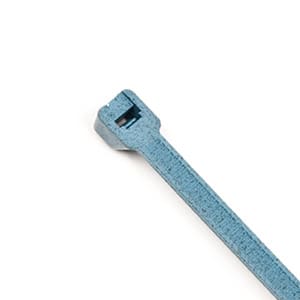The use of cable ties is common in many industrial, mechanical and electrical applications. You may have heard these called by a different moniker, such as wire wraps, Ty wraps, nylon ties or cable wraps. All are the same and refer to the same device. The question being asked here is what strength or length of cable tie should be used.
Materials
Cable ties may be manufactured from a variety of materials, such as:
- Nylon
- Stainless steel (non-detectable)
- Detectable metal
- Fluoropolymer
Additionally, there are cable ties that are weather resistant, heat resistant and oil resistant. Some are releasable and reusable; some are not. Some use Velcro while others use a pull through design closure. Some are even impact resistant. Many come in a variety of colors that aids in quick identification.
Sizes/Strengths
If you have ever purchased cable ties, you know that they are available in many lengths and widths. This, however, does not necessarily correspond to strength rating. All of these ties are rated by a loop tensile strength or LTS, which is stated in pounds. The most common ties range between 18 lb and 175 lb.
The LTS is the maximum amount of force that can be exerted on the locking mechanism once it has been deployed.
Maximum Diameter
This refers to the largest diameter of the bundle to be tied or restrained.
Length & Width
The cable tie should fit around the bundle and the loose end pulled completely through the locking device. As long as the tie fits the bundle and can be locked securely, it’s all good. Longer ties can be used to secure items, such as cargo or merchandise.
Temperature Range
Consider the operating conditions inherent to the intended application. Will the tie be utilized inside or outside? Will there be any extreme cold or heat that will affect the cable tie? Keep in mind that cold temperatures can cause most nonmetallic materials to brittle.
So how exactly do I decide what cable tie to use?
Now that you know a little about the specifications on the cable wraps, you should have a good idea how to pick the proper one. As far as size, that is a matter of your judgment. Measure the diameter of the bundle to be tied and then select the cable tie that best fits the need. Consider the environment in which the tie will be utilized. If there will be excessive heat involved, possibly use a metal cable tie. If extreme cold is expected, use a tie that is either temperature or cold resistant. Assess the presence of oils, liquids or fluids to determine if you need to select an oil resistant cable tie.
Here at CableTiesPlus, we are always ready to assist you in finding the perfect cable tie for the job. Give us a call!



